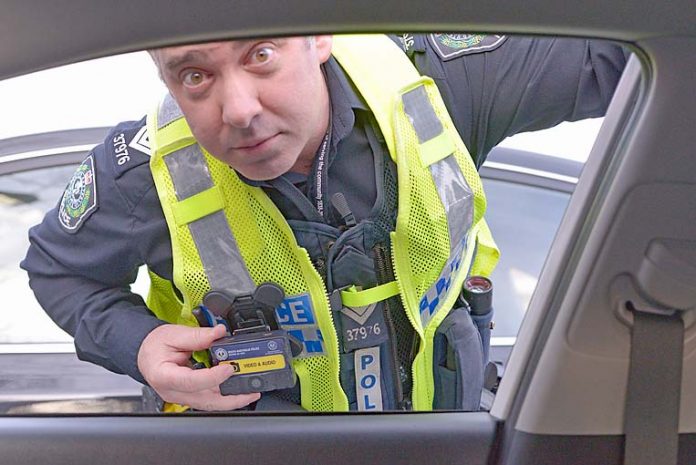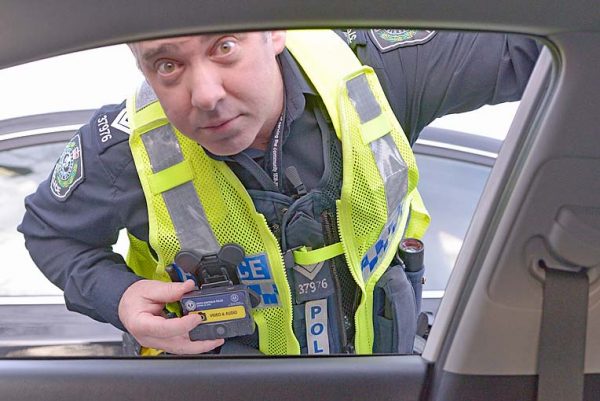

SOUTH Australian Police body-worn camera units have been rolled out in the Limestone Coast recently, adding an extra layer of protection for officers and the general public.
The state-of-the-art cameras – which were initially trialled in metropolitan Adelaide in May 2017 – were introduced to the Limestone Coast local service area in June.
Police officers in the Limestone Coast – particularly those on the front-line – have participated in training and are now undertaking their duties with the camera.
Limestone Coast Police acting officer in charge Operations Inspector Campbell Hill said the camera gave a full picture of every interaction police officers had with the public.
“The policy position is that when police have an interaction with members of the public the camera is turned on,” Insp Hill said.
“It is designed to capture those interactions, no matter the context and then if it is needed later for evidence or there is a complaint made about the officer, then it is a tool we have at our disposal.”
He said the cameras also added an extra layer of protection for the police officer when faced with difficult situations
“We know that even if people are drug and alcohol affected, if they are aware they are on video, it can affect their behaviour,” he said.
“So not only is it going to help some people stay out of trouble themselves by altering their behaviour, but in turn it provides a good layer of protection for our police.”
In addition to protecting police, the cameras also add a level of integrity and accountability to officers undertaking their duties.
Findings from the Australian Institute of Criminology suggest that police detainees in Australia are largely supportive of the use of the cameras.
“There is a real integrity built within this system because the video cannot be manipulated,” Insp Hill said.
“It will provide us with the best evidence to deal with complaints against police, but there are a whole range of other benefits beyond that.”
Officers wear the cameras on their front pocket and a light is displayed when it is turned on.
The camera automatically captures the 30 seconds of audio and video before the record button is pressed.
“The LED lights illuminate when it is in use, so it is quite easy for people to tell when it is in use,” Insp Hill said.
“Part of the policy is also to advise people when they are being recorded.”
Insp Hill said the cameras had been a handy addition from a managerial perspective since they were introduced last month.
“When we review incidents and make assessments about how we are going to progress certain matters, it has certainly increased our ability to gain some oversight,” he said.
“It is a really useful tool for evidence gathering.”





